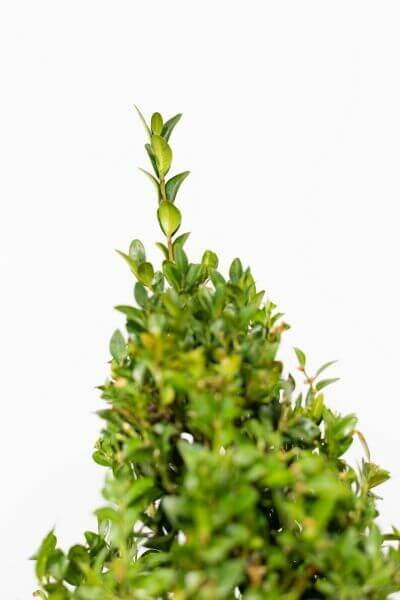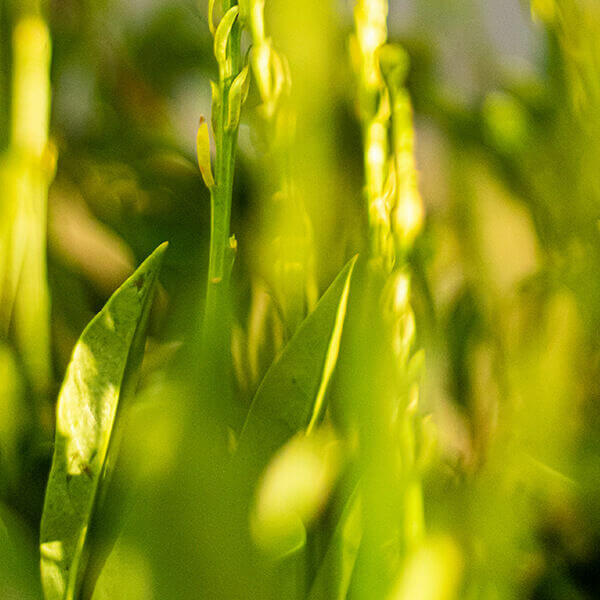Hedge Plants For Container Gardening
Hedge Plants For Container Gardening
Blog Article
Hedging Plants For Formal Hedges
Boost your garden's attraction with lavish hedge ranges such as Yew (Taxus), Thuja, Laurel, Photinia, and Bamboo, celebrated for their structural integrity and ecological benefits.
Yew and Thuja supply evergreen coverage and winter season strength, while Laurel uses fast development and broad, fragrant leaves.
Photinia includes seasonal charm with its dynamic red foliage, and Bamboo provides a low-maintenance, peaceful atmosphere.
These hedges enhance air quality, decrease sound, and develop tranquil, private spaces.
Correct planting, spacing, and maintenance guarantee vigorous development and ecological harmony.
Check out how these lavish varieties can raise your garden's appeal and well-being.
Key Takeaways
Transform Your Garden With Lush Hedge Varieties
- Select Yew for its thick, evergreen growth and exceptional durability.
- Opt for Laurel for its fast growth and broad leaves, guaranteeing fast personal privacy.
- Pick Photinia for its vibrant seasonal foliage, which turns a striking dark red.
- Utilize Bamboo for a low-maintenance, winter-hardy hedge with aesthetic appeal.
- Area plants 2-3 per meter and prune frequently for optimum development and health.
Popular Hedge Plants
When changing a garden with lavish hedge ranges, it's important to consider popular hedge plants such as Yew, Thuja, Laurel, and Photinia due to their unique characteristics and benefits.
Yew (Taxus) is highly esteemed for its longevity and dense, green development, making it a prime option for sustaining landscapes.
Thuja is kept in mind for its evergreen foliage and robust winter season strength.
Photinia includes seasonal vibrancy with red leaves that darken in time, producing dynamic visual appeal.
Laurel provides fast growth and fragrant, broad leaves, ideal for quick personal privacy.
In Addition, Bamboo is an exceptional choice for ambiance, offering a low-maintenance, winter-hardy option that boosts the garden's visual with its sophisticated, swaying walking sticks.
These selections cater to a range of horticultural requirements and preferences.
Benefits of Garden Hedges
Garden hedges use a wide variety of benefits, making them an important addition to any landscape. These natural barriers are cost-effective to carry out and supply considerable wind defense, improving air flow and contributing to sound reduction. The thick foliage of hedges like Thuja and Beech makes sure privacy by blocking exposure, creating a tranquil and remote environment.
Hedges likewise play an essential function in microclimate policy, supplying a stable environment that fosters plant development and lessens temperature changes. Their intricate leaf structures filter toxins, improving air quality and adding to a healthier garden environment.
Moreover, hedges stand out in noise decrease, absorbing and deflecting sound waves to lower ambient sound levels. This dual performance of supplying both acoustic and visual personal privacy improves the total tranquility and visual appeal of any garden.
Planting and Upkeep Tips
For a successful hedge, meticulous preparation of the planting area is vital. Ensure the soil has appropriate pH and drain to support strong root advancement.
Space the plants properly for the selected types. Water the hedge frequently throughout its initial growth stage, changing as required with seasonal changes.
Execute a organized bug control and disease prevention technique, utilizing organic or chemical treatments when essential. Regularly examine for aphids, termites, and fungal infections.
Apply mulch to keep wetness and reduce weeds. Seasonal pruning promotes thick growth and air flow, necessary for plant health.
Following these standards will help you cultivate a dynamic, properly maintained hedge that boosts the appeal of your garden.
Spacing and Trimming Standards
Spacing and Trimming Guidelines
Appropriate spacing and trimming are important for cultivating healthy, aesthetically appealing hedges. Appropriate spacing ensures each plant receives sufficient nutrients, light, and air flow.
Follow these standards for optimum hedge upkeep:
- Spacing: Position hedge plants 2-3 plants per meter to motivate robust growth.
- Pruning Techniques: Routine pruning is necessary for keeping wanted hedge height and shape. Cut new growth in summer and cut down older wood throughout winter season.
- Seasonal Care: Adjust cutting approaches and schedules according to seasonal requirements to make sure plant health.
- Hedge Height: Frequently screen and trim to maintain the desired hedge height and attain consistent looks.
Abiding by these actions will ensure your hedge flourishes, enhancing both the appeal and performance of your garden.
Selecting the Right Hedge
Choosing the Right Hedge
Picking the suitable hedge involves evaluating aspects such as mature height, foliage density, and environmental strength. Successful hedge plant choice needs understanding each types' growth attributes and site-specific versatility.
For example, Yew (Taxus) uses outstanding longevity and thick growth, while Thuja is significant for its winter strength. Additionally, thinking about maintenance requirements is vital; fast-growing species like Laurel or Privet need regular cutting, whereas low-maintenance options like Bamboo or Ivy may be preferable for those looking for minimal maintenance.
Ecological factors such as soil type, light schedule, and moisture conditions need to also direct the choice process. This mindful approach guarantees the picked hedges will flourish, supplying both aesthetic and functional advantages to the garden landscape.
Delivery and Planting Recommendations
To ensure your hedge plants flourish, they must be provided by specialized couriers and planted immediately upon arrival.
Follow these necessary steps for successful planting:
- Soil Preparation: Enhance the soil with natural matter to enhance drainage and nutrient content.
- Planting Depth: Produce a trench two times the width and equivalent to the depth of the root ball.
- Watering Techniques: Water thoroughly after planting, keeping the soil consistently damp however not filled.
- Mulching: Use a layer of mulch to retain moisture and reduce weeds.
Customer Support and Service
Given the essential function of prompt support in horticultural pursuits, our client assistance group is available six days a week through telephone, email, and social media to provide skilled advice and swiftly deal with any concerns. Their commitment to quick reaction times guarantees client complete satisfaction by fixing inquiries associated with plant health, optimal planting methods, and upkeep schedules.

-----------------
Within 48 hours
This thorough support system, reinforced by a stellar 9.3/ 10 client score, highlights our dedication to boosting the gardening experience for every client.
Often Asked Concerns
The Length Of Time Does It Consider Hedge Plants to Establish?
Hedge plants usually require one to three years to become totally developed, with the precise duration differing by species and growing conditions.
Effective care throughout this crucial period is necessary for robust growth. Constant watering, watchful weed control, and appropriate Additional hints fertilizer application are essential in promoting strong root development.
For instance, fast-growing species like Laurel might establish more quickly, while slower-growing ranges such as Yew may take longer. Persistent maintenance speeds up the facility process, leading to healthy and dense hedges.
What Are the very best Hedge Plants for Personal Privacy?
The concern of the best hedge plants for personal privacy involves evaluating evergreen and deciduous alternatives.
Evergreen hedges like Thuja, Laurel, and Cypress supply year-round coverage, ensuring constant privacy.
On the other hand, deciduous hedges such as Beech provide seasonal privacy, shedding leaves in cooler months.
Key upkeep ideas for privacy hedges consist of regular cutting, fertilizing in spring, and appropriate spacing-- typically 2 to 3 plants per meter.
In addition, consistent watering and thorough weed removal are vital for promoting healthy, thick growth.
Can Hedge Plants Bring In Wildlife to My Garden?
Yes, hedge plants can attract wildlife to your garden by supplying important advantages like shelter, food, and nesting sites, therefore enhancing regional biodiversity. Yew, holly, and laurel are outstanding for bring in birds, while ivy supports a variety of bugs.
Nevertheless, it is necessary to keep in mind that there are some drawbacks, such as increased maintenance to handle pests and regular maintenance. Thoroughly selecting and preserving hedge ranges can help balance these advantages and downsides, eventually cultivating a vibrant and sustainable environment in your garden.
Exist Any Flowering Hedge Plants Available?
Yes, there are flowering hedge plants available that can improve the appeal of your garden.
For instance, Elaeagnus, also called Olive Willow, produces fragrant white flowers in the fall, adding a touch of beauty.
Photinia, another popular option, showcases lively red leaves that grow into an abundant green, producing a vibrant visual impact throughout the seasons.
To make sure these plants thrive, it's important to practice appropriate pruning strategies and seasonal upkeep, such as trimming new growth in the summertime and cutting down in the winter season.
These procedures will assist preserve the health and visual appeal of your blooming hedges.
How Do I Prevent Insects in My Hedge Plants?
To prevent pests in hedge plants, employ natural pest control methods and maintain proper hedge care. Introduce beneficial insects like ladybugs, which take advantage of hazardous insects, to produce a balanced ecosystem.
Routinely inspect your hedges for signs of problem and promptly remove any afflicted parts to avoid the spread. Guarantee the health of your hedges by applying well balanced fertilizers and supplying sufficient water.
Use mulching to retain soil wetness and appropriate spacing to decrease plant stress and promote robust growth. These practices jointly help in reducing pest concerns and preserving a healthy hedge.
Conclusion
In essence, choosing the ideal hedge ranges such as Yew, Thuja, and Laurel can transform any garden into a serene sanctuary. These plants provide year-round greenery, improve visual appeal, and offer useful advantages like noise decrease and wind protection.
Appropriate planting strategies, accurate spacing, constant watering, and seasonal cutting are important for optimum growth.
Trustworthy delivery services and professional consumer assistance ensure a smooth experience from purchase to planting, making it easier than ever to elevate your outdoor area.
Garden hedges offer a wide range of advantages, making them an important addition to any landscape. These natural barriers are affordable to execute and supply significant wind security, boosting air blood circulation and contributing to noise reduction. The dense foliage of hedges like Thuja and Beech guarantees personal privacy by blocking visibility, producing a peaceful and secluded environment.

Pruning Methods: Regular pruning is essential for keeping preferred hedge height and shape. Cut brand-new growth in summer season and cut back older wood during winter season.
Report this page